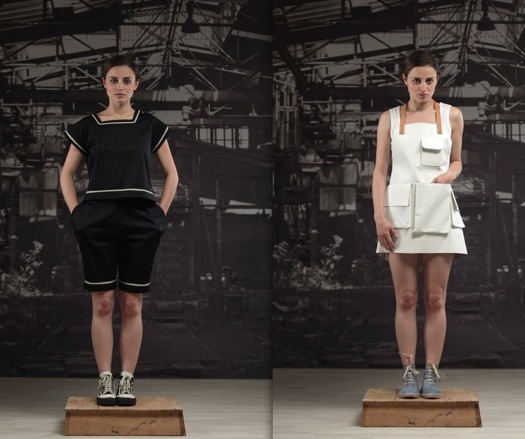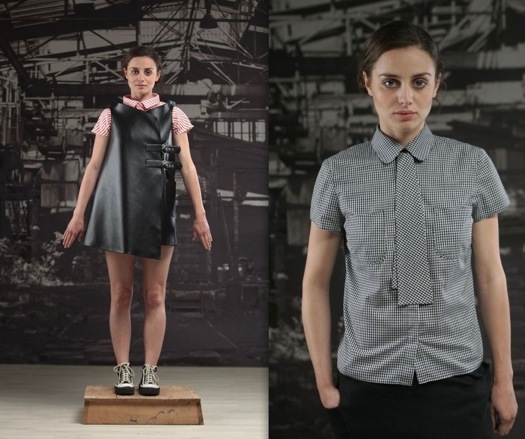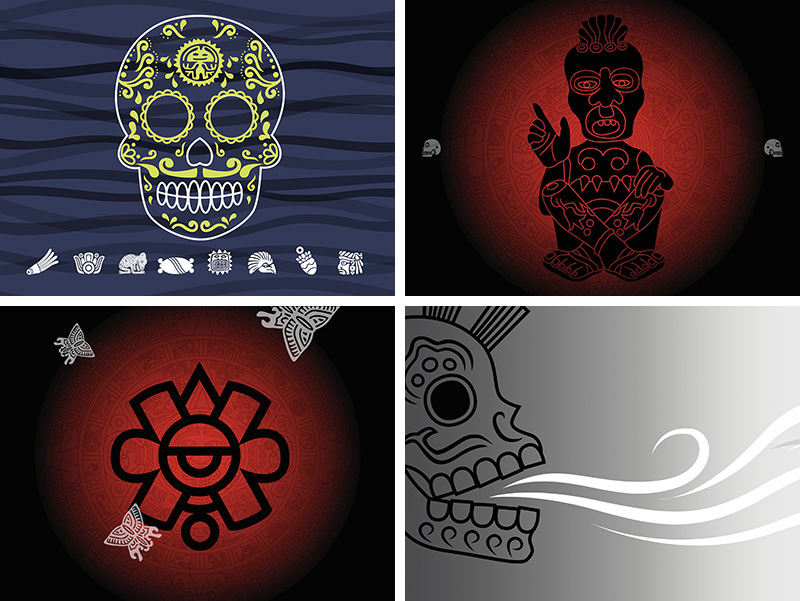
June 27, 2011
Comradettes

Rodchenko Worksuit (£220) and Safety Mittens Top (£140), part of new Comradettes collection
Experience has taught Eldina Begic much about ideology. Born in Sarajevo, the 34-year-old designer witnessed the political transformation of former Yugoslavia, the conflict that followed, and the siege of her native city, before moving to London in 2000. Says Begic: “I have lived in a liberal Communist country, a country at war, a country after war — and now I am living in the heart of capitalism.”
It’s a background of extreme contrasts that inspired her latest creation: a 20-piece collection of women’s clothing, shown for the first time in London last week. The goal: to celebrate the “socialist work culture” of her childhood and to challenge the individualism that characterizes the fashion that Begic finds in today’s Britain.
In particular, Begic wants to send a message about a lost “sense of solidarity” and “community” through her Comradettes range. “It is the very opposite of fashion and the design industry, which are all about seasonal changes and creating one-off pieces. What I want to do is to explore the idea of uniform and work clothes and use it for propaganda.”
 Marine Suit (£185) and Multi-Pocket Apron (£80)
Marine Suit (£185) and Multi-Pocket Apron (£80)
For the designs of her “productivist worksuits,” she has drawn on constructivist style and her own research into the workwear of Eastern Europe and South America. The collection makes heavy use of hard-wearing fabrics to create, for example, cotton dungarees and overalls as well as jackets of rubberized cotton and a smock of stiff artists’ canvas.
The opening show made plain the back-to-basic theme: no catwalk or models, just a rack of clothes in an open wardrobe on the floor of a former factory with a pile of hammers as the only decoration. Slogans on the outside walls proclaimed: “Revolution is Glorious,” “Down with Luxury” and “Dress for Revolution.”
But the Comradettes range aspires to an elegance never seen on the factory floor. Begic’s heavily stylized interpretation of working class clothing has little to do with the rough and ready outfits of heavy industry. Each piece is tailor made, and she takes pride in the high quality of the workmanship. “My mother worked as a tailor for 42 years. I don’t have single piece of clothing that came from a shop.”

Welding Dress & Waistcoast (£165) and Everything Shirt With Tie (£110)
For Begic it’s a first venture into clothing — she dislikes the word “fashion.” In the past, she’s designed innovative retail outlets for a range of high-profile clients from Levi’s to Nike and Save the Children. But she likes to stress that her real enthusiasm is for the conceptual rather than the strictly practical. “I see this just as an interesting way of using a particular medium.”
Isn’t there a risk that Comradettes will be seen as no more than boho chic, a sentimentalized interpretation of an uncomfortable past for today’s rich? In time, Begic hopes that some of the items may be mass produced to bring down the cost, but for now prices aren’t likely to attract Main Street buyers. Says Begic: “I can’t do anything about the prices but what I can do is influence people’s opinions and, hopefully, their values.”
Observed
View all
Observed
By William Underhill
Recent Posts
Mine the $3.1T gap: Workplace gender equity is a growth imperative in an era of uncertainty A new alphabet for a shared lived experience Love Letter to a Garden and 20 years of Design Matters with Debbie Millman ‘The conscience of this country’: How filmmakers are documenting resistance in the age of censorship
 William Underhill is a writer and editor based in Oxford, England, from where he reports regularly on politics, business and technology for
William Underhill is a writer and editor based in Oxford, England, from where he reports regularly on politics, business and technology for 

